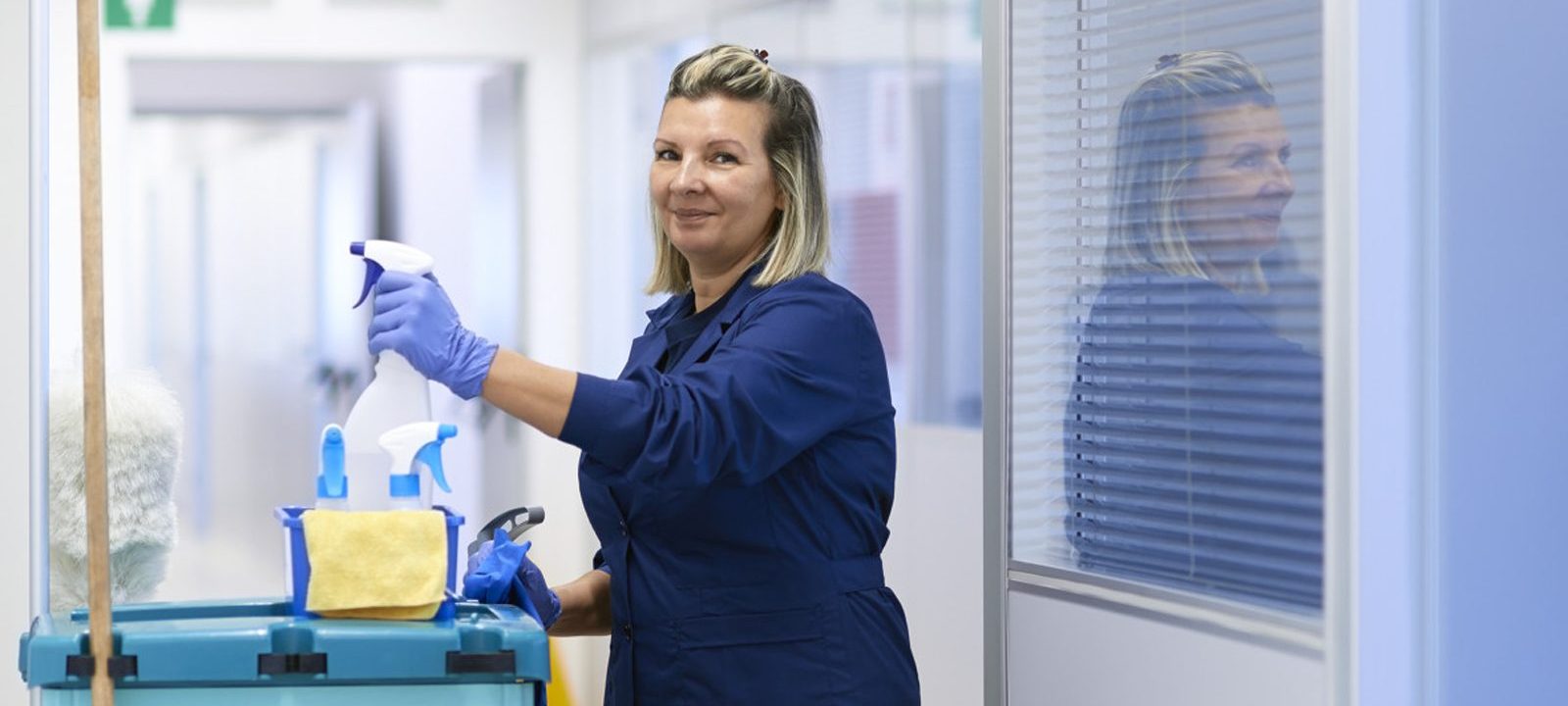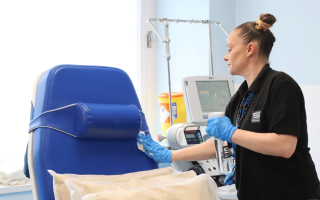It has always been necessary to keep hospitals scrupulously clean to avoid all kinds of illness, but since COVID-19 arrived in our lives, thorough hospital cleaning has become more important than ever.
Add to that the prevalence of HCAIs (Healthcare-associated Infections), such as MRSA and C.difficile, of which there are around 300,000 cases per year, caused through treatment or contact. It is vital to improve hygiene in hospitals.
Since 2021, NHS England has followed the National Standards of Healthcare Cleanliness which outlines the cleaning required throughout the NHS. Scotland, Northern Ireland and Wales also have their own national standards of cleanliness for healthcare settings.
For the health and wellbeing of patients, staff and visitors, cleaning should be carried out regularly in many different hospital locations, from waiting rooms to operating theatres.
So how are hospitals kept clean? There are all types of cleaning in hospitals, as this blog post will outline.
What are the cleaning procedures in a hospital?
According to the Care Quality Commission (CQC), the independent regulator of health and social care in England (there are similar organisations in Scotland, Wales and Northern Ireland), the following should be achieved:
- Premises must be kept clean and cleaning must be done in line with current legislation and guidance
- Premises and equipment should be visibly clean and free from odours that are offensive or unpleasant
- Domestic, clinical or hazardous waste and materials must be managed in line with current legislation and guidance
Providers should:
- Use appropriate cleaning methods and agents
- Operate a cleaning schedule appropriate to the care and treatment being delivered from the premises or by the equipment
- Monitor the level of cleanliness
- Take action without delay when any shortfalls are identified
- Make sure that staff responsible for cleaning have appropriate training
How to improve hygiene in hospitals
The types of areas that should be cleaned daily in a hospital:
Patient wards and rooms
Regular cleaning is essential here to prevent a build-up of dust or pathogens. Then there are high-touch surfaces like bedside cabinets and bed rails. This is one of the most important types of cleaning in hospitals in order to avoid HCAIs.
Operating theatres
These require the highest standards of cleanliness. They must be cleaned after each use, with surgical equipment and instruments thoroughly sterilised.
Waiting rooms and corridors
There should be regular cleaning of door handles, tables and seats due to the number of visitors. It’s also a good idea to remove magazines in order to avoid cross contamination.
Bathrooms
These should be cleaned several times a day, especially taps and toilet handles.
Equipment and medical devices
From stethoscopes to ECG machines and from BP monitors to IV devices, they should all be cleaned regularly.
Ventilation and heating systems
These need regular attention in order to ensure that filters and ducts are replaced and cleaned in order to avoid airborne germs.
Hospital offices
Offices and other staff areas should also be cleaned regularly as a means to avoid cross contamination in other parts of the hospital.
How do hospitals clean rooms?
Cleaning hospital rooms is essential to minimise the possibility of infection and disease to vulnerable patients. It is important to use the right cleaning products in the right way. NHS and CQC guidelines will be followed. Here are some things to consider when cleaning a patient’s room:
Cleaning products
Do hospitals clean with bleach? Yes, if their risk assessment allows. But there are many other kinds of professional cleaning products for a variety of scenarios, from infection prevention to laundry.
Protection
Hospital cleaning staff must wear protection to avoid harm to themselves and patients. This protection includes gloves, aprons and face masks if required.
Cleaning surfaces
Firstly services are dusted, debris removed and then cleaned with appropriate disinfectant. The same procedure applies to floors.
Cleaning equipment
From bedsheets to bedpans and from switches to chairs, everything needs to be cleaned in an effective way. This could mean washing laundry with anti-bacterial detergent at a high temperature or sterilising a thermometer.
This is just one example of how a hospital stays clean. Wherever you are cleaning, disease and infection prevention and control are at the forefront. Follow hospital guidelines to ensure cleaning is carried out correctly.
Five ways to maintain good hygiene in hospitals
- Wash hands regularly
- Colour code cleaning equipment to avoid cross contamination
- Regular training for staff
- Supervising cleaning practices and adjusting if necessary
- Use technology to determine the areas that require the most cleaning
Consider hiring a contract cleaning service like those offered by Samsic. We are a leading provider of bespoke cleaning solutions, and we specialise in hospital cleaning. Contact us today for a quote.








